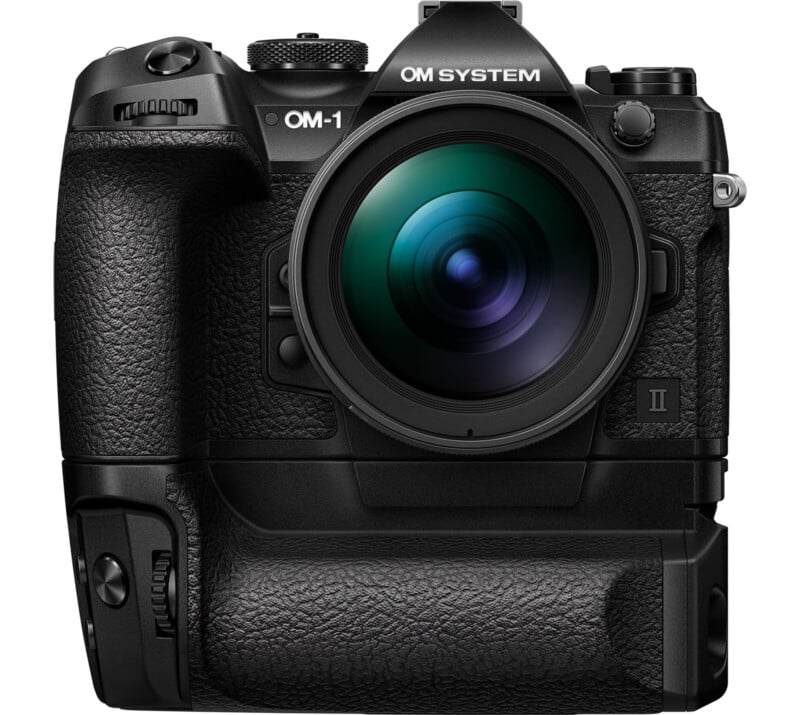![]()
OM Digital Solutions Corporation has unveiled the OM System OM-1 Mark II. The successor to 2022’s OM-1 flagship camera includes everything that made the OM-1 “the best Micro Four Thirds camera ever made,” but the “Mark II” moniker doesn’t include the substantial upgrades photographers may be expecting.
There have been no changes to the camera’s image sensor — it’s still a 20-megapixel stacked backside-illuminated Live MOS chip — or TruePic X image processor.
![]()
Despite staying the course on the image processing pipeline, OM has expanded the Mark II’s memory, which results in some changes to buffer depths. Sequential shooting speeds remain unchanged, allowing for up to 50 frames per second with full AF/AE and 120 fps with locked AF/AE, but photographers can shoot more than 200 RAW frames at 120 fps, up from around 90.

The camera can also shoot blackout-free at slower frame rates than before. There wasn’t blackout at 50 fps before, but some photographers wanted that same experience at slower speeds, so now users can select 12.5 and 16 fps rates and still achieve a blackout-free viewfinder.

An area where OM System promises further improvement is autofocus. The company says autofocus accuracy is significantly improved, especially for fast-moving subjects. The camera also includes human detection as an option.
Some photographers found the original OM-1’s dials were lackluster and difficult to use when wearing gloves. OM heard the complaints, so the OM-1 II includes rubberized control dials with an improved tactile feel and response.

Computational photography has long been an essential component of Olympus and now OM System cameras, and the OM-1 Mark II is no exception. Beyond the typical suite of features like Live ND and High Res Shot (50 megapixels handheld and 80 megapixels when using a tripod), the OM-1 II features the world’s first Live GND (Graduated ND) feature.

With this, photographers can replicate the effects of a graduated ND filter, a popular choice for landscape photographers, without the cumbersome use of actual filters. Further, users can customize the filter steps and type of Live GND filter in real time. Users can adjust the location and angle of the transition from light to dark and pick between soft, medium, and hard gradations.

The OM-1 II also includes an updated Live ND feature, which now offers strength up to ND128, doubled from the original OM-1’s strongest Live ND filter option of ND64.
Unfortunately, it is impossible to combine Live ND and GND with the OM-1 II’s High Res Shot modes, but at least Live ND and Live GND allow for the capture of RAW image files.

The High Res Shot mode now allows photographers to capture 14-bit RAW files, up from 12-bit RAW files. This may sound like a relatively small jump, from just 12 to 14, but the way bits work, it amounts to three times the tonal range.

Rounding out the noteworthy changes is an improved in-body image stabilization system. The OM-1 was already an excellent camera for handheld shooting, given its relatively compact and lightweight design and stabilization system, rated for up to seven stops. The OM-1 II offers 8.5 stops of shake correction.
![]()
Pricing and Availability
The OM System OM-1 Mark II will be available in late February for $2,400 ($3,200 CAD) body only and $3,000 ($4,000 CAD) in a kit with the OM System M.Zuiko Digital ED 12-40mm f/2.8 Pro II zoom lens.
Image credits: OM
